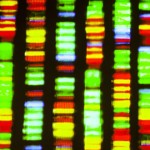All told, the results indicate that the adaptive immune system does recognize mitochondrial organelles. Moreover, the authors note that the method described in the paper can be used to assess the presence of these AMAs. Additionally, they note that although they focused their attention on immunoglobulin IgG, their assays could be easily modified to identify subclasses of antibodies, such as IgG1, IgG2a, IgG2b, or other isotypes, such as IgA and IgM.
Lara C. Pullen, PhD, is a medical writer based in the Chicago area.
ad goes here:advert-1
ADVERTISEMENT
SCROLL TO CONTINUE
Reference
- Becker Y, Loignon RC, Julien AS, et al. Anti-mitochondrial autoantibodies in systemic lupus erythematosus and their association with disease manifestations. Sci Rep. 2019 Mar;9:4530.


